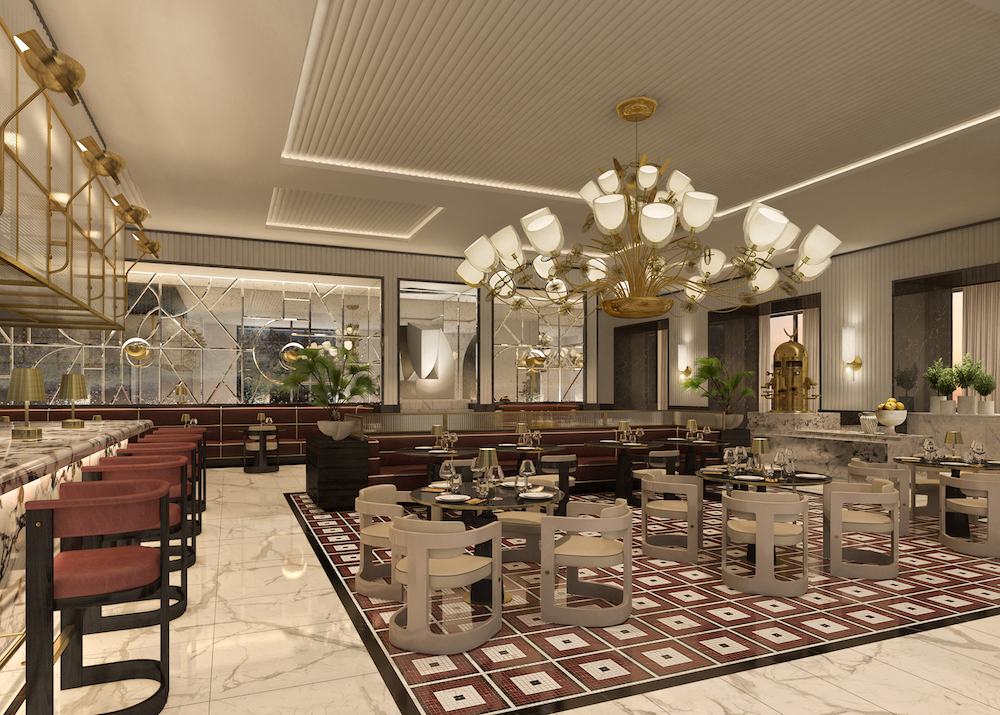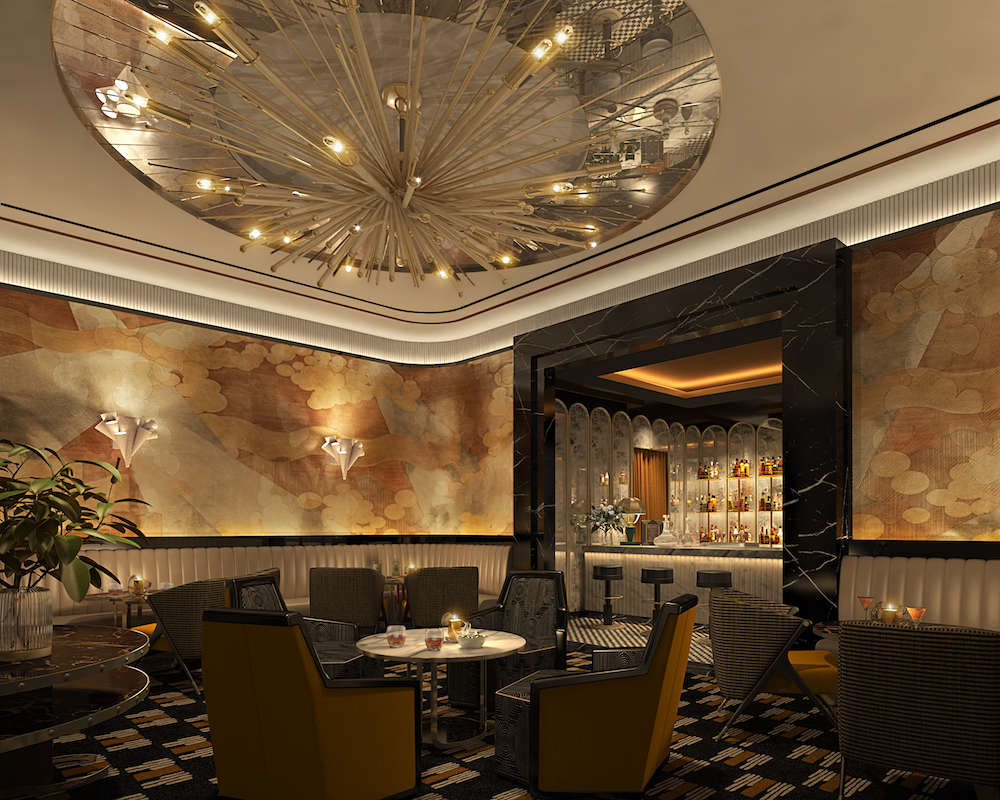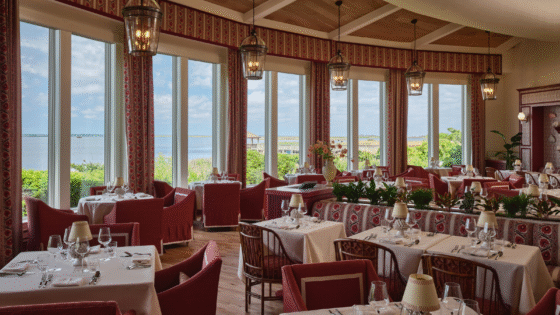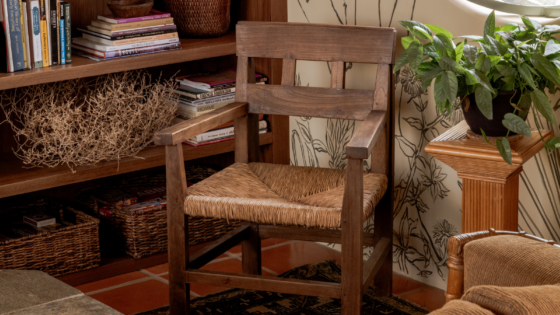With Covid-19 taking up much of the industry’s attention at the moment, it’s important to keep sustainable design high on the agenda, as Senior Associate at HBA EMEA Erica Pritchard explains…

It wasn’t all that long ago that hotels could be praised for putting in LED lights, or banishing plastic bottled water from the mini bar. Yet in more recent times, the world has become focused on sustainability in an insistent way, and in no other industry has this been more apparent than in the world of travel and hospitality. Modern day travellers are seeking to travel more sustainably, and for hoteliers, sustainable credentials have become a necessity. But whilst offering eco-friendly straws and reducing towel washing is certainly commendable, ensuring sustainability is at the core of a hotel or restaurants design vision, and is fundamental in futureproofing it for generations to come.
Broadly, to be sustainable means to organise all human activity in support of the natural systems that ultimately give us life. In our field, to be sustainable means to integrate the processes of development planning, architecture, engineering, interior design, and construction in a way that will also support the natural systems in which we live. As such, sustainable design simply cannot come as an afterthought. Rather it requires intensive forethought to emerge from being an aspirational trend to having sustainability credentials that stand up. The most successful projects are those that have sustainability written into the brief as a core objective and where the whole design team are working together in carbon lifecycle thinking, along with the help of a dedicated sustainability consultant.

Image credit: HBA EMEA
Often simple planning decisions that need to be thought through early in the design process can be make or break for how sustainable a building is. For example, if you open-up aspects that are southern facing, you minimise the need for artificial heating. Similarly, look at optimising natural ventilation to reduce the need for mechanical cooling – it may be obvious to us as designers, but it is all too easily overlooked.
I’ve already touched on the dreaded plastic bottle – a permanent fixture at the hotel bedside and in every mini bar for the last few decades. Not so in vogue anymore but quite difficult to phase out given guests need for fresh water. Hospitality spaces are more commonly adding water stations now, which of course negates the need for plastic bottles but also gives the guest a feeling of generosity. The same goes for the mini bar: in its current iteration it is surely a prime example of unsustainability and has reached its lifespan. However, by stocking it with earth-friendly products that are prepared and purchased locally it becomes an eco-warrior and champion of locale. And let’s face it, not everyone wants Pringles!

Image credit: HBA EMEA
As designers we are just one piece of the puzzle and it is important to acknowledge the value of suppliers in the quest for eco-friendly design. We rely heavily on having strong relationships with suppliers and procurement, and the expert knowledge they provide. There are some amazing companies doing the heavy lifting of research for designers and such partnerships with these enterprises are invaluable as we work together to deliver sustainable hospitality spaces.
Companies offering a level of bespoke craftsmanship that hold their suppliers accountable will hopefully enforce the cause. For example, Christophe Delcourt a Parisian furniture designer offers pieces that are made from natural materials, timber, ceramic, metals and because of the quality they have an extended lifespan, aging with integrity. Like Christian Liagre’s furniture, they are instantly contemporary heirlooms. In the genre of lighting, Alison Berger Glass Works creates lighting that is based on, “the visual vocabulary that societies create to manifest their beliefs, desires and rituals…Like memory itself, these glass objects, sculptures and furnishings transcend time and place.”

Dodds&Shute, a furniture procurement company, are leading the way in putting the carbon footprint of their products at the heart of their work. They have also partnered with Cordillera Azul National Park project in Peru and are offsetting their carbon on projects by buying forest credits. Other companies are offering a level of bespoke craftsmanship that Having companies hold their suppliers accountable will hopefully enforce the cause.
Of course, the mechanics and materials of a building are fundamental in how sustainable it is, however we are also responsible for making such spaces beautiful and inspiring, particularly in the luxury sector. The key here is timeless design. Much like fast fashion, designing for trends is undoubtedly one of the biggest contributors to the world’s sustainability issues. Trends are disposable and thus, so are the materials that are used. The focus should always be on designing for quality and longevity, and recyclability.
Whilst sustainability has been high on the agenda for some time now, the current pandemic has meant it has acquired a new meaning for us all. Hoteliers, restaurant owners and operators find that the sustainability of their business model itself is being radically challenged. Looking ahead beyond the current shutdown future guests will, first and foremost, expect assurances that a hotel or restaurant can sustain the basic health and wellbeing of patrons and staff. In this complex context, interior designers alone cannot ensure a project is sustainable. However, interior designers can play a crucial role in reassuring guests, helping solve the problems of the ‘new normal’ and futureproof such buildings.
It strikes me that we are entering the Age of Responsibility, forced into sharp focus by this pandemic. It includes a principle of life cycle assessment: cleaner production, sustainable consumption, and cradle to cradle concepts. This is not wishful thinking, but a practical strategy for achieving sustainability and responsibility, economically, socially, and environmentally. We know how to green deserts, purify air, seed the rain, and create an abundance of food. We know how to enhance soils rapidly and build healthy and completely natural shelters. How can we, as the present generation, weave regenerative life methodologies together to enable future generations to enjoy a more sustainable environment?
- Image credit: HBA EMEA
- Image credit: HBA EMEA
One example, albeit extreme, of regenerative values are the Bridges of the Khasi people located in Northeast India. High in the mountainous plateau near the border with Bangladesh, this matrilineal society has been growing and stewarding living root bridges grown from the roots of the banyan tree. These bridges over their high mountain gorges and rushing rivers grow stronger with time, unlike our modern-day concrete and rebar structures. It takes 15 – 20 years just to cross one of these gorges, and maybe another decade before the bridge can bear the regular weight of a passing human. While many of the bridges that are planted are by people who will never walk on them in their lifetime, they are planted and tended to for future generations.
Sustainability clearly isn’t a one-step equation, but a multifaceted process towards making a lasting change. The 7th Generation Principle of Design is a lens through which to measure a design’s effectiveness at maintaining continuity through time – in other words, will it still be performing its intended functions 150 years from today when your grandchildren’s grandchildren’s children are born?
On the surface, to create a sustainable design appears to be a longer and more expensive process, but it doesn’t have to be. The more we adopt sustainable designs, the more such an approach becomes normalised. Sustainable design can be achieved in a way that takes it beyond that of an aspirational trend and towards an embedded cultural change. This is something we need to both inspire and educate our clients on. As designers, we research our market, the setting, and its context. The market will soon be pushing us even further in terms of sustainability as we re-enter a world post-pandemic and we need to be ambassadors of this information, feeding it to clients so that it becomes a core objective for all the stakeholders involved. We must be rigorous in creating holistic hospitality spaces, places that inspire, are differentiated in the marketplace but most importantly, can thrive for generations to come.
Main image credit: HBA EMEA






